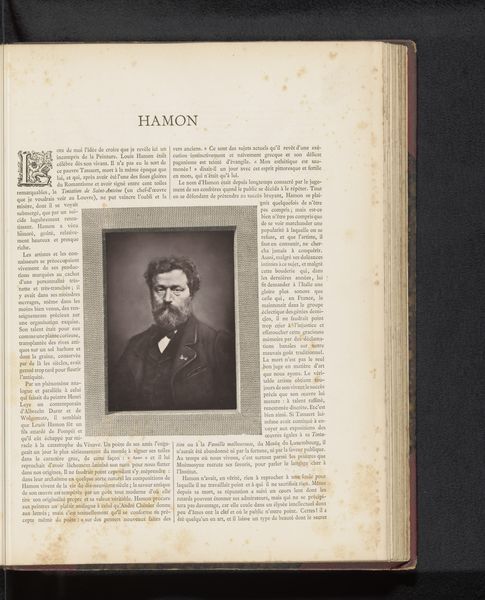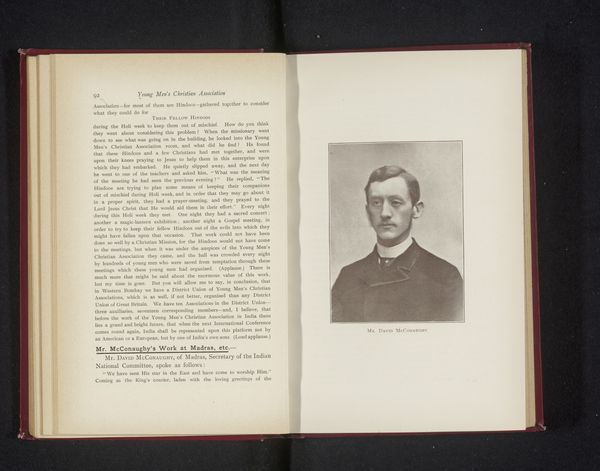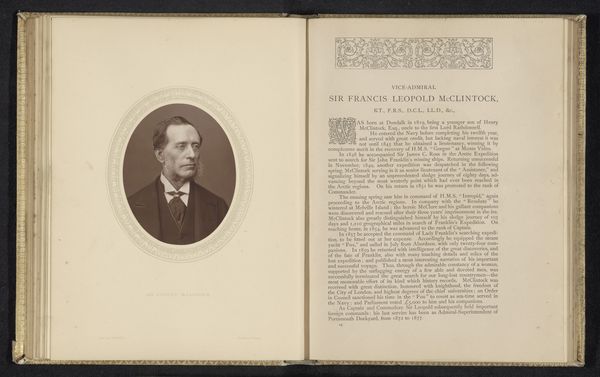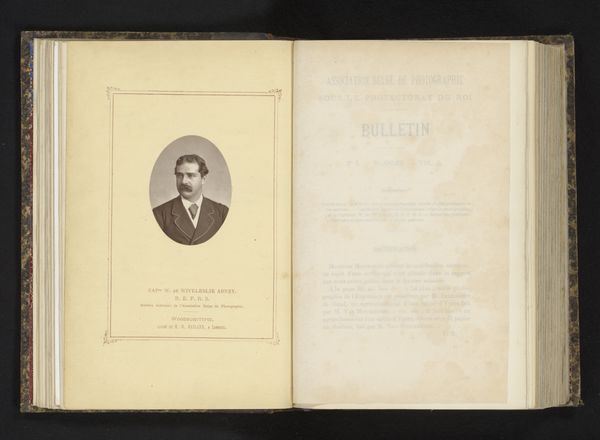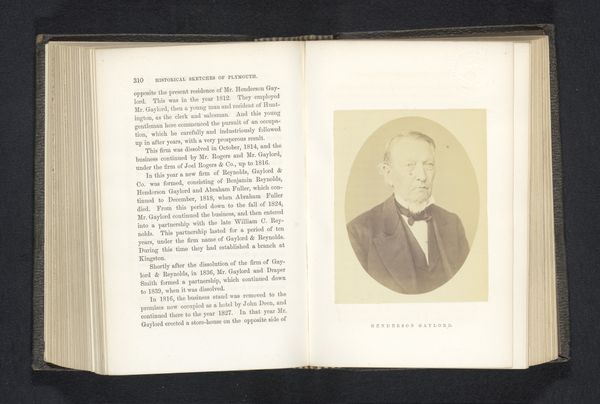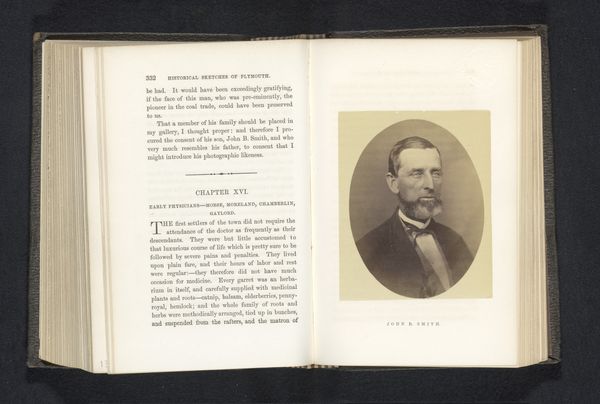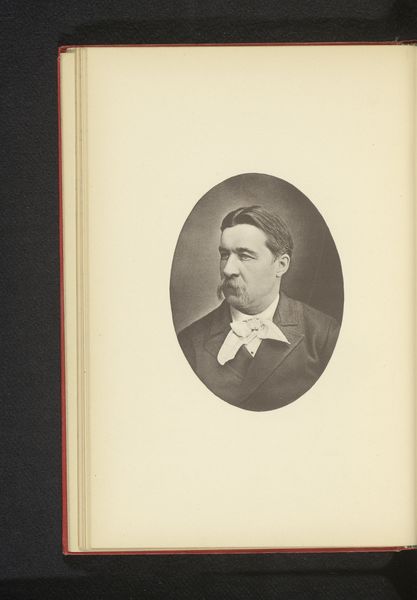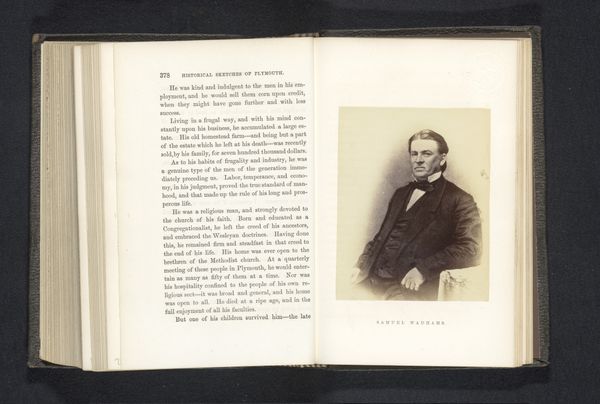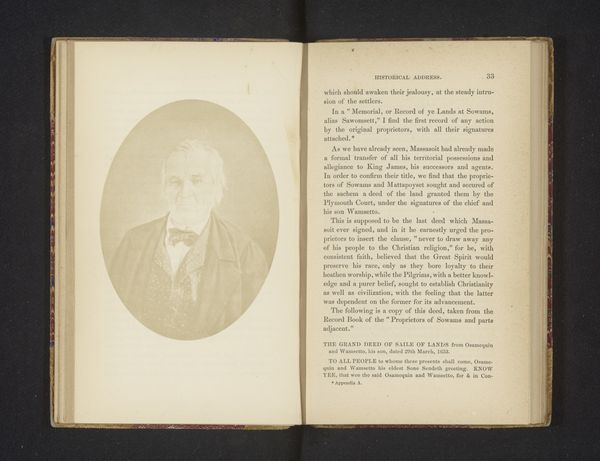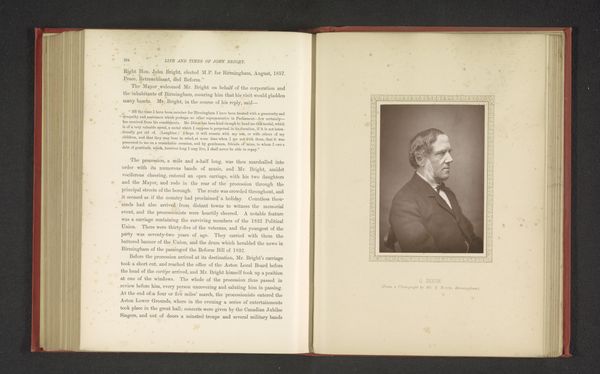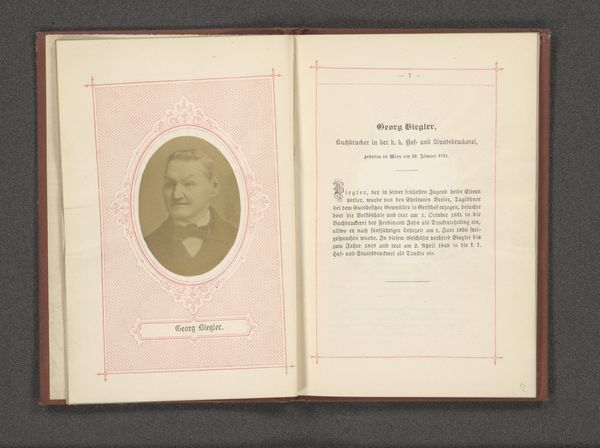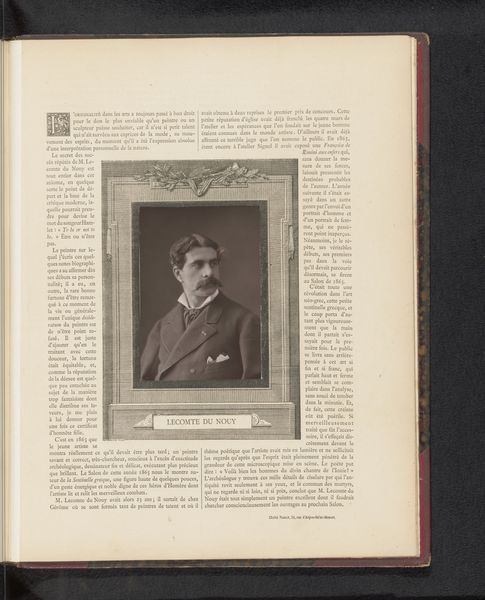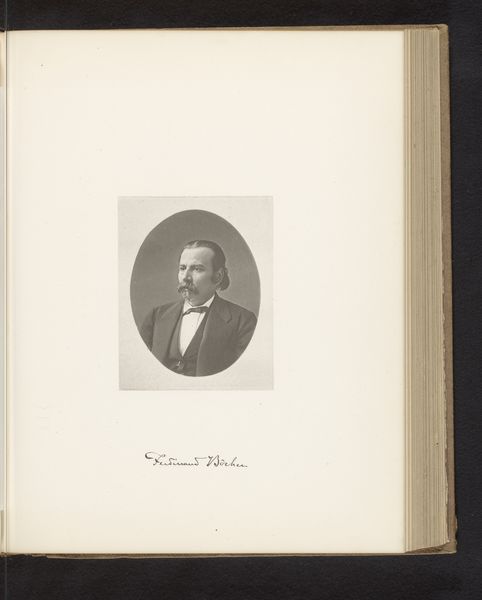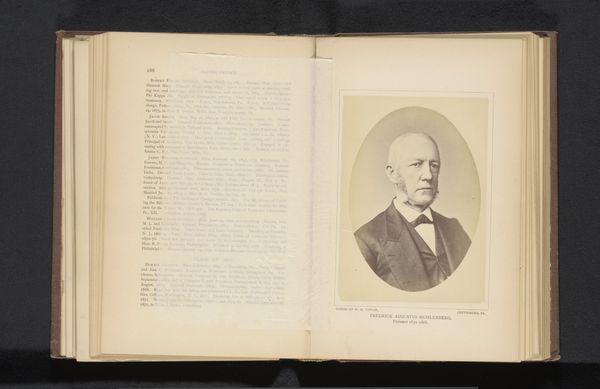
print, paper, photography, albumen-print
#
portrait
#
paper non-digital material
# print
#
paper
#
photography
#
albumen-print
#
realism
Dimensions: height 110 mm, width 80 mm
Copyright: Rijks Museum: Open Domain
Curator: Here we have Charles Marville's "Portret van Paul Dubois," dating to before 1877. It's an albumen print on paper, residing in the Rijksmuseum. The subject's gaze seems very direct. What do you make of it? Editor: It's a compelling portrait. I notice the oval frame within the larger page, making it feel like a historical document but also an intimate study. What can we unpack about its historical and cultural significance? Curator: Considering the Realism movement and the rise of photography, such portraits served multiple purposes. Dubois was an accomplished sculptor; Marville was commissioned for the print. But beyond a straightforward representation, how might this portrait be understood within the context of artistic identity and social power structures? What does it tell us about how artists, particularly male artists, were perceived and wished to be perceived at the time? Editor: I suppose it's about solidifying status, showcasing skill, and perhaps even constructing a specific image of masculinity. Is the background, the surrounding page, meant to influence our reading of the work too? Curator: Exactly. Consider the printed text surrounding the image, framing Dubois as a figure of intellect and skill. Doesn't that suggest a constructed narrative meant to bolster his reputation? In that way, doesn't the piece function almost like a press release, helping an emerging artist secure attention and patronage? It makes me wonder who this photograph was intended for, and what message they were meant to receive. Editor: That’s a really helpful way to consider the portrait and the surrounding printed details. It moves beyond just capturing a likeness. I'm going to look at other Marville portraits with these questions in mind. Curator: Precisely! The layering of photography, portraiture, and textual narrative unveils fascinating insights into the intersection of art, identity, and social climbing in 19th-century France.
Comments
No comments
Be the first to comment and join the conversation on the ultimate creative platform.
